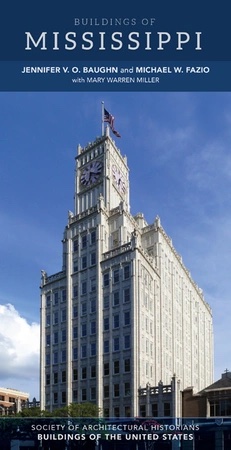
In 1910 the state legislature passed the state’s first laws allowing the consolidation of Mississippi’s one-room schoolhouses into larger structures. This two-story brick, hipped-roofed, south-facing example has a conventional central stair hall plan. On the first floor, which housed grades one through eight, large rooms to either side of the hall have pressed-metal ceilings and beam coverings, with the beams marking the rooms’ midpoints and location for moveable, subdividing partitions. On the second floor, which housed grades nine through twelve, the room west of the hall is similarly capable of subdivision, while the room to the east is a single space with a stage at one end and was used for study halls, student assemblies, and community activities. This room’s west wall includes a large, operable, counterweighted panel designed to be raised so that overflow crowds seated in the hall could view events.




















